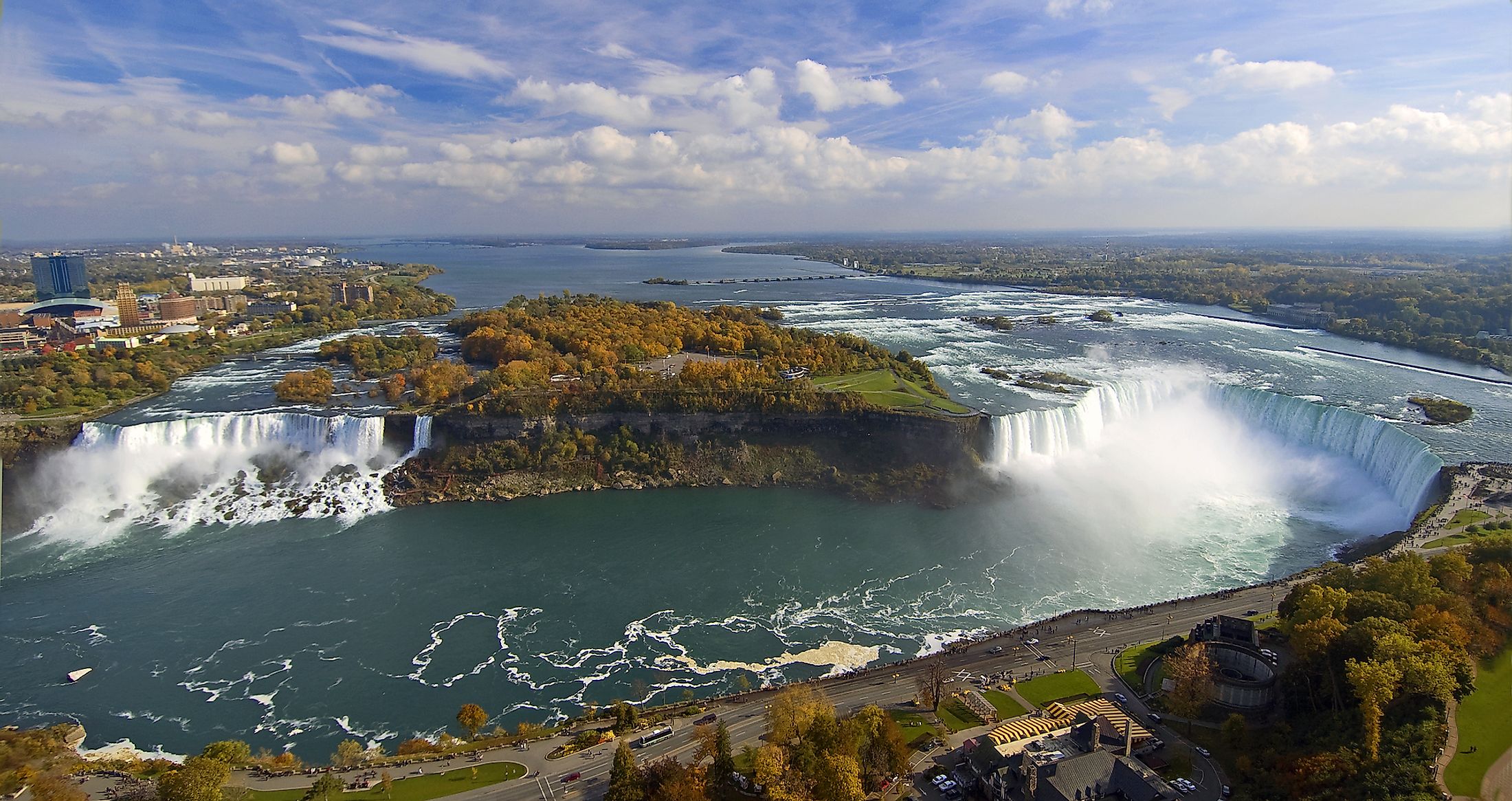
Niagara River
The Niagara River flows north from Lake Erie to Lake Ontario, and runs through both Canada and the United States, along the national border between New York state and the province of Ontario. The river is most famous for its waterfall - the Niagara Falls - which is unofficially considered to be a natural wonder of the world.
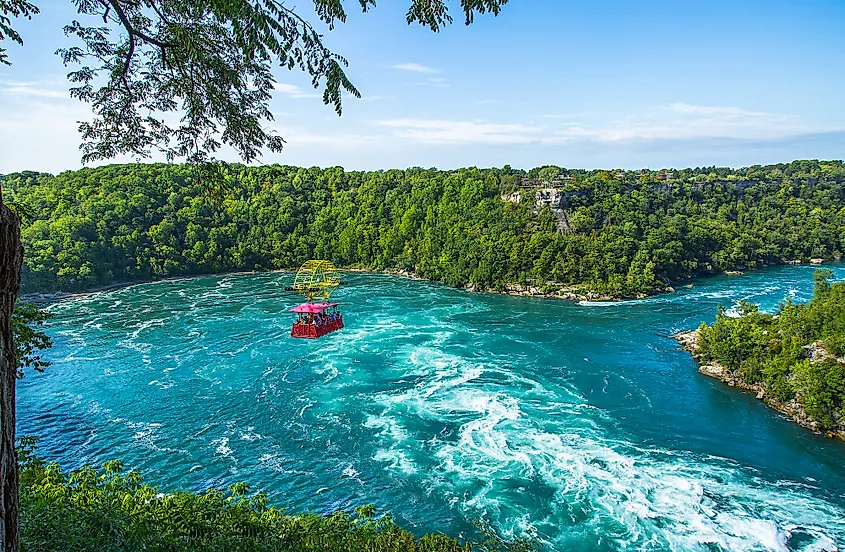
Niagara River measures roughly 58 kilometers in length. It plummets over the Niagara gorge at the Niagara Falls, though due to erosion over the last 12,000 of years, the falls themselves have receded some 11 kilometers upstream. From the falls, the river lands in the gorge and continues on the Niagara whirlpool, a section of swirling rapids with a depth of around 38 meters. Like the gorge and falls, the whirlpool speartates Canada and the United States.
History
As a major natural phenomenon, the Niagara River played an important role throughout American and Canadian history. Its position along what is now the Canadian/United States border also means it was home to many battles and forts. On the Canadian side, Fort George and Fort Erie were important strongholds, while the American side had Fort Niagara. These military strongholds were important during the Seven Years War, the American Revolution, and also the War of 1812.
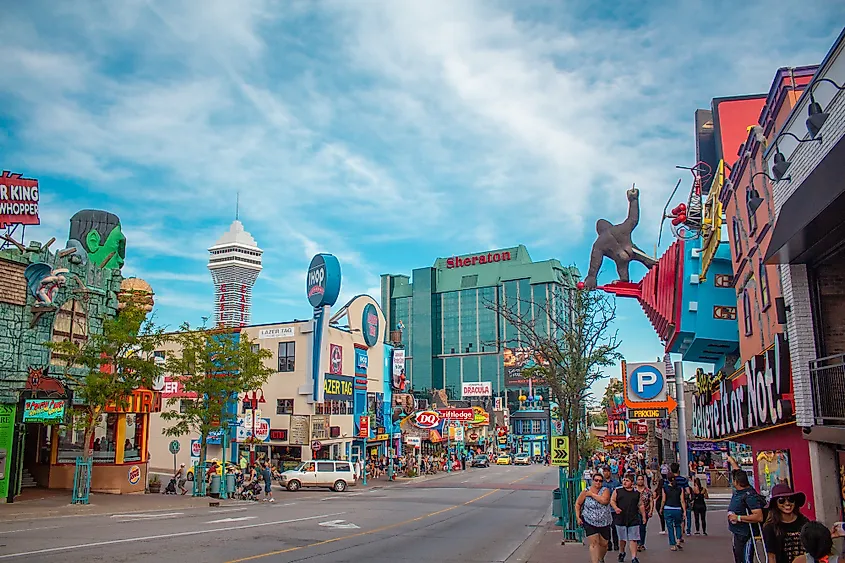
Additionally, during the American Civil War, many patrons of the Underground railroad found escape by crossing the Niagara River (at its less volatile crossings) in order to escape into Canada. To commemorate this, a Freedom Crossing Monument stands overlooking the river from Lewiston, New York.
The river became the site of a number of settlements, which now house several cities on both the American and Canadian sides. These include Niagara Falls (a city on both the U.S. and Canadian sides), as well as US cities Buffalo, Lewiston, Grand Island, Tonawanda, Porter, Wheatfield and Youngtown. On the Canadian Ontario side, cities include Chippawa, Fort Erie, Niagara-on-the-Lake, and Queenston.
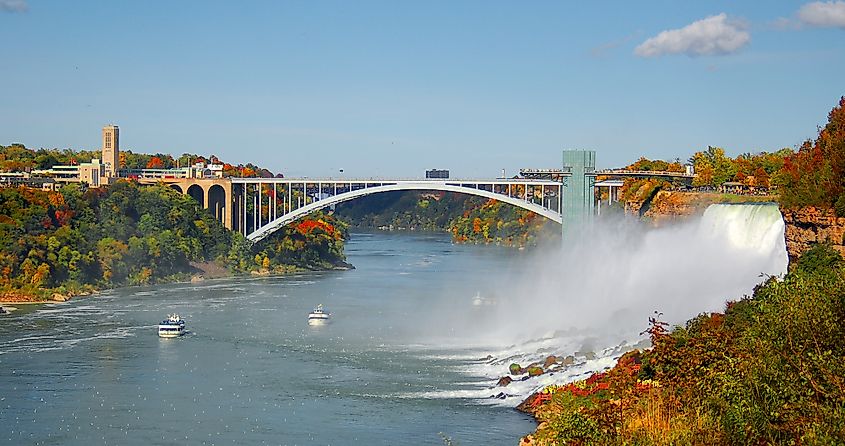
The Niagara Rainbow bridge is a major border crossing for those wishing to travel from one country to the other, and spans the river near the Niagara falls. Similarly, the Queenston/Lewiston bridge also crosses the Niagara River and forms a national border crossing further upstream. Officially, the border itself runs down the approximate middle of the river, so any crossings of the river or falls must be done so under the watch of border guards, and with explicit permission.
The Falls
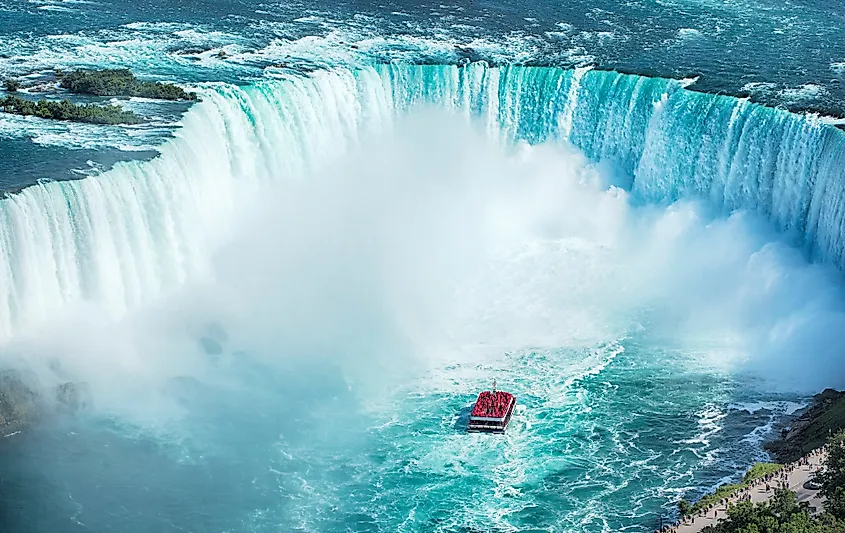
The falls themselves are the largest attraction on the Niagara River. Consisting of three falls - the Horseshoe (Canadian), and the smaller American Falls and Bridal Veil Falls (American). Together, these falls have the highest flow rate of any falls in North America. The height, or drop, is roughly 50 meters, and at peak the river pours some 168,000 cubic meters of water over the falls’ edge every minute. The falls are extremely popular with tourists and visitors from around the world, and the cities on each side cater greatly to tourism.
Islands
Within the Niagara River, there are several islands. The largest are Grand Island (Amerian) and Navy Island (Canadian). Niagara Falls has Goat Island and Luna Island, which actually split the falls into its three sections: Horseshoe Falls, Bridal Veil Falls, and American Falls. Additionally, the river houses Unity Island, which is much further upstream near the city of Buffalo.
Uses
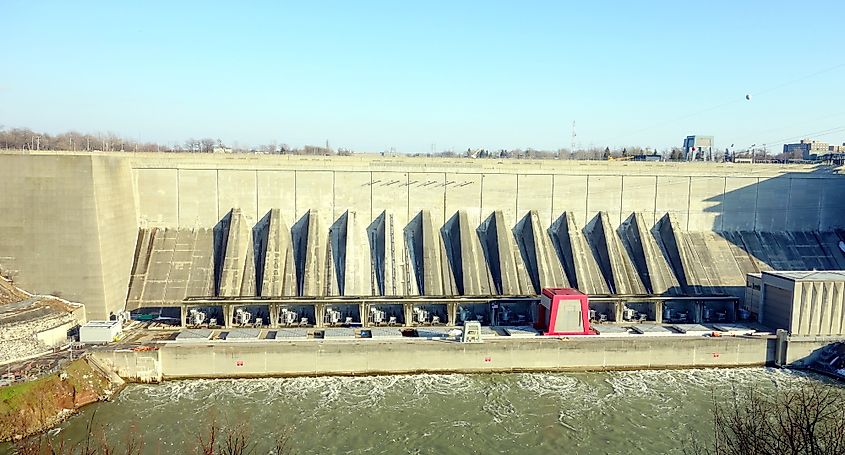
Not only has the river been a tourist attraction and historically important, but it is extremely important as a source of Hydro power to both countries. The Canadian side has the Sir Adam Beck Hydroelectric Power Stations, which were built in 1922 and then 1954, While the New York side has the Robert Moses Niagara Power Plant, which was constructed in 1961. The power stations generate a combined 4.4 gigawatts of electricity, which are used to power the populous province of Ontario, and state of New York respectively.
The river also has a canal system which allows boats to pass through the dammed river. Ships travelling through the Great Lakes can use the Welland Canal, which is located on the Canadian side of the river and forms part of the larger Saint Lawrence Seaway. This is necessary to bypass the fatal drop of the Niagara Falls downstream.
Known for its famed waterfalls, the Niagara River actually has an important role to play in the lives of Ontarians and New Yorkers. From being the place of history and freedom, to providing hydro power to major cities, the river continues to be a strong presence for both Canadians and Americans, as well as a tourist attraction for visitors from around the world.











